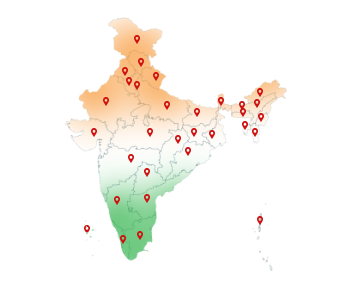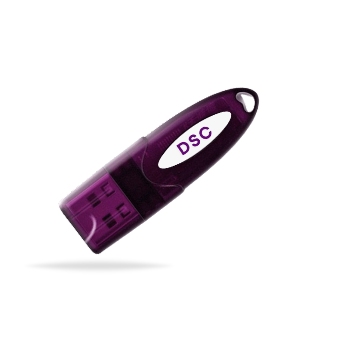06-Aug-2025
DSC in PFMS: Secure Government Transactions the Right Way
The government trusts it. Auditors demand it. PFMS runs on it— Digital Signature!
The Government of India moves thousands of crores digitally every single day. And the engine powering this massive, real-time financial machinery is the Public Financial Management System (PFMS).
But here's the catch: with great money comes great responsibility.
Managing public funds at such a large scale demands not just speed and accuracy, but rock-solid security. Who's approving the transaction? Has the file been tampered with? Can this payment be legally traced?
That's where the Digital Signature Certificate or DSC in PFMS enters — your unforgeable seal of approval in PFMS's digital transactions.
Want to buy PFMS Digital Signature, but don't know from where? Buy Capricorn DSC today!
What is PFMS?
Public Financial Management System (PFMS) is a centralized, web-based platform developed by the Government of India to make it easier to send, track, and manage public money.
The Government may give a scholarship to a student, a subsidy to a farmer, or a payment to a government vendor. Here, PFMS ensures that every rupee reaches the right person at the right time with complete transparency.
PFMS started as a small project under the Ministry of Finance and has now become a nationwide digital backbone for managing central and state government payments.
History of PFMS – In 3 Stages
1. Stage 1: The Beginning (2009)
PFMS was launched in 2009 by the Controller General of Accounts (CGA) as a pilot project.
It was initially used to track fund flow in just four government schemes:
1. Mahatma Gandhi National Rural Employment Guarantee Scheme (MGNREGS)
2. Sarva Shiksha Abhiyan (SSA)
3. National Rural Health Mission (NRHM)
4. Pradhan Mantri Gram Sadak Yojana (PMGSY)
These schemes were chosen because they handled large volumes of funds. Hence, they needed better tracking and transparency
Stage 2: Nationwide Expansion
After seeing positive results, the government expanded PFMS to cover all central schemes across the country. This made it possible to track and manage funds for a large number of schemes in real-time.
Stage 3: A Full Digital Payment System
PFMS evolved beyond just tracking. It became a complete digital payment and accounting system. It got integrated with banks, Aadhaar, PFMS DSCs, and other digital tools. This made it easier to transfer funds directly, verify users, and maintain records.
Why Was PFMS Formed?
PFMS was created to solve a major problem in public finance: the lack of visibility and accountability in how funds were being released and utilized.
Before PFMS, tracking the money released by the central government was difficult and time-consuming. Delays, leakages, and manual processes were common.
PFMS solved this by offering:
- Real-time fund tracking
- Direct Benefit Transfers (DBT)
- Digital record-keeping and audit trails
Growing Need for Security in PFMS
As PFMS expanded across ministries, states, and thousands of implementing agencies, the volume and sensitivity of transactions increased.
Think about it:
When government officers approve payments, sanction bills, or authorize transfers, their actions directly impact public funds. PFMS needed more than just automation — it needed foolproof security.
The bigger PFMS grew, the more essential digital security became. And at the top of this security layer is the DSC in PFMS. That's why the system integrates Digital Signature Certificates — bringing in digital trust, legal validity, and protection against fraud.
Need a PFMS DSC for safe government fund transfers? Buy Capricorn Digital Signature now!
Digital Signature for PFMS: A Trusted Identity Layer
PFMS handles thousands of high-value transactions daily. In such a system, trust and security aren't optional — they're MANDATORY!,
People often search for “DSC full form in PFMS”, “PFMS DSC manual”, or “What is DSC in PFMS”
So, a DSC is your verified digital identity, used to sign documents and approve transactions online — securely and legally. It ensures that:
- The person performing an action is truly authorized
- The data or document hasn't been altered
- Every approval is legally valid under the Information Technology Act, 2000
Types of DSC Accepted in PFMS
A class 3 DSC for PFMS is essential, and here's what you need to know:
What is DSC in PFMS? (Class 3 Digital Signature)
- Mandatory for most PFMS users (DDOs, PAOs, PDOs, and Agency Admins)
- Offers high-level security and two-factor authentication
- Comes with a cryptographic USB token
- Issued to individuals (not organizations)
Note: Class 2 DSCs were earlier accepted but are now discontinued as per updated guidelines from the Controller of Certifying Authorities (CCA)
Use Cases of DSC in PFMS
Now you need to know what is DSC in PFMS for?
Digital Signature in PFMS is a functional requirement for anyone involved in processing, approving, or monitoring fund disbursements. They ensure that every action taken within the system is authentic, secure, and legally verifiable.
Below are the key use cases where DSC in PFMS plays a vital role:
1. Approving Payments
Officers like DDOs and PAOs digitally sign payment files for scheme-related disbursements.
2. Signing Sanction Orders
All fund sanction orders must be digitally signed before being processed.
3. Submitting Utilization Certificates (UCs)
Agencies submit digitally signed UCs to report how allocated funds were spent.
4. Authenticating Financial Documents
Documents like audit trails, fund statements, and budgets require PFMS DSC-based verification.
5. Approving Grants-in-Aid
Departments use PFMS DSCs to authorize and release grants to specific agencies.
6. Agency and Scheme Onboarding
DSC in PFMS validates the identity of officials during new scheme registration or agency setup.
How to Register DSC in PFMS Portal?
Before using your DSC in PFMS, you must first register it. Here's how to do DSC for PFMS registration correctly:
Step 1: Log in to PFMS
Visit the portal and do a PFMS login using your User ID and Password.
Step 2: 'Register DSC'
After PFMS login, go to the 'Masters' section, then select 'DSC Management', and click on 'Enroll DSC'.
Step 3: Insert USB Token
Plug your DSC token into your computer provided by a trusted Certifying Authority (CA) like Capricorn CA.
Note: Make sure the PFMS DSC Utility download is done and it's installed on your system.
Step 4: Click on 'Digital Signature Enrolment'
Once you're on the Enroll DSC page, click the ‘Digital Signature Enrolment' button that appears on the screen.
Step 5: Allow the Browser to Access the DSC
A pop-up may appear asking for permission. Click ‘Don't Block' or allow access so that the system can read your DSC token.
Step 6: Select Your Certificate
The system will automatically scan your token and show the available digital certificates.
Choose the one issued in your name.
Step 7: Enter Your Token PIN
Now enter the PIN you use to access your DSC token. This is like a password that verifies your identity.
Step 8: Confirm Successful Enrolment
Once the PIN is verified, a message will appear saying ‘DSC Enrolled Successfully'.
Step 9: Select Purpose and Add
Next, you'll need to set the purpose from the dropdown for which you're enrolling the DSC.
Then click on ‘Add'.
Step 10: Final DSC in PFMS Enrolment
Finally, click the ‘Enrol' button at the bottom of the page. You'll see a confirmation message, and you're done!
Now, this will act like your PFMS DSC manual for enrollment.
Looking for a DSC for PFMS registration? Buy PFMS DSC from Capricorn CA now!
Conclusion
Using a DSC for PFMS online is not just recommended — it's mandatory for key users like DDOs, PAOs, and agency officials. A Digital Signature Certificate ensures every payment, approval, or document upload is legally valid, tamper-proof, and fully accountable.
Just complete the PFMS DSC utility download, and follow the correct enrollment process given above to get started. And if you want a quick and hassle-free way to get your DSC, Capricorn CA offers everything you need — from online application to doorstep delivery of token-based Class 3 DSCs.
Go digital the right way! Get your DSC for PFMS online today — and ensure every rupee is approved with trust.


